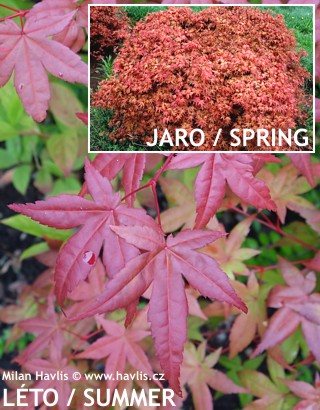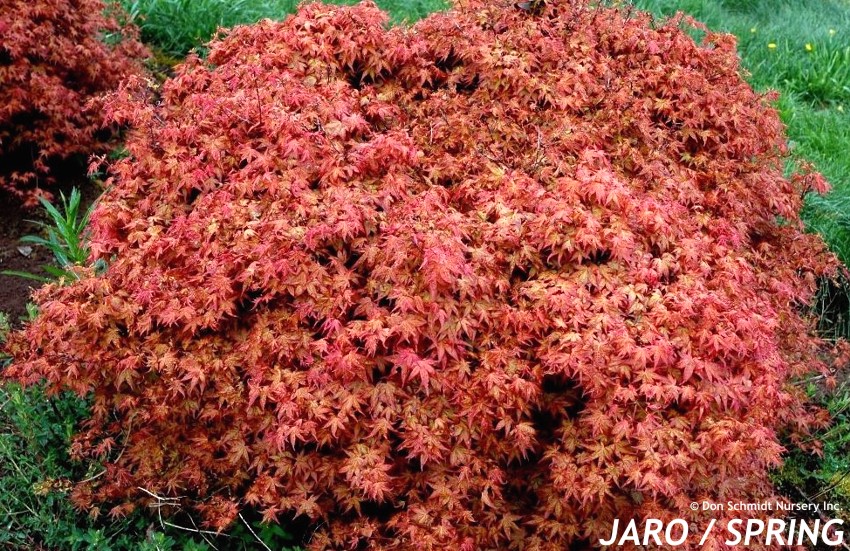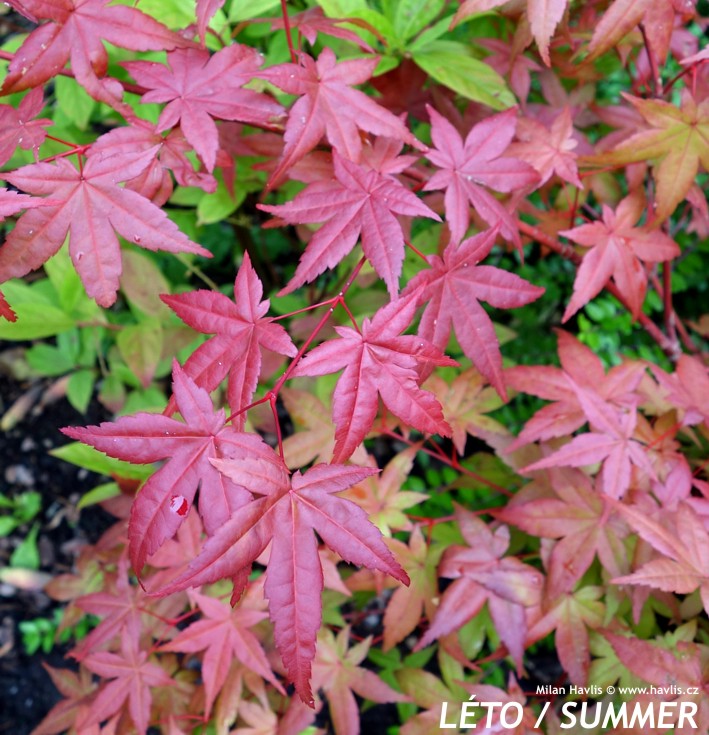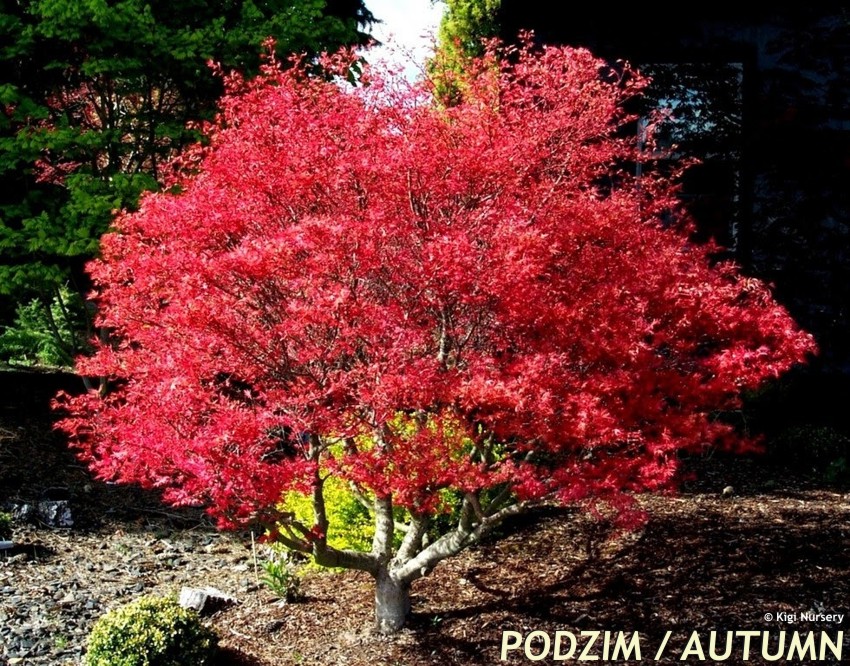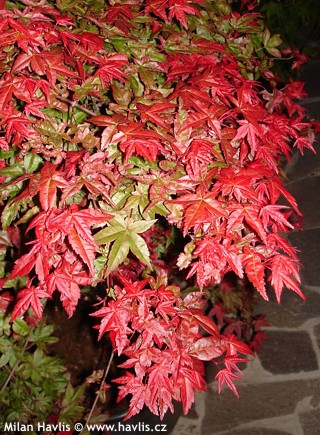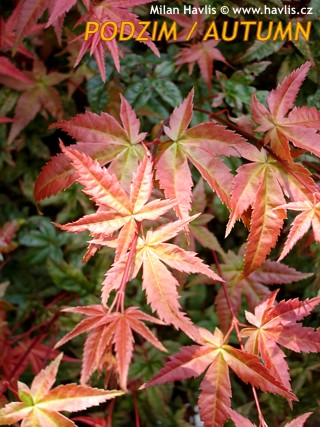Acer palmatum 'CORALLINUM' Japanese maple
size/type
medium-sized shrub,medium-sized shrub
usual height
1,5-3m
usual width
1,5-3m
leaves
deciduous broadleaf
colour of leaves
flowers
insignificant or non-blooming
location
full to partial sun
soil type
acidic (peaty)
soil moisture requirements
evenly moist (dislikes drought)
USDA zone (lowest)
5b (down to -27°C)
winter protection
for zone 5+6

for zone 7

categorized
Acer
Japanese maples are very decorative and usually low shrubs, occasionally small trees, with attractive foliage and picturesque structure. There are many varieties in various shades of green, chartreuse, golden and yellow, red to maroon, and even multicoloured (variegated). They originate from Asia (Japan, China, Korea), where they have been cultivated for at least two centuries or perhaps even longer, however, they were introduced to Europe only at the beginning of the 19th century, specifically to Great Britain in 1820. Interestingly, the botanist Carl Peter Thunberg described them much earlier, in 1784, because he undertook an expedition to Japan in 1775-1776, discovering new species and collecting seeds and plants. He named the tree Acer palmatum, referring to the leaf shape resembling a human hand with fingers, although it is said that they first reminded him of frog fingers, which is also one of its oldest Japanese names: kaede. The other is momiji (baby hands). The beauty of the colours and shapes of the leaves and trees is reflected in many arts, for example, in the oldest preserved collection of Japanese poetry from the 8th century, the Man'yōshū (Collection of Ten Thousand Leaves). The Chinese poet Wang Wei (699-759) celebrated their beauty in many of his works, and naturally, maples often appeared in ancient paintings, tapestries, porcelain, and wherever classic and traditional decorations associated with the symbolism of these maples were desired: beauty and elegance, serenity, endurance, vitality, and transformation.Description of the plant:
Corallinum is a unique variety of Japanese maple that is often mistaken for Sangokaku variety which also has coral pink new leaves but exhibits an entirely different habit. To be honest, we also had troubles getting the variety right in the past but now we have one supplier who has the true mother plant that guarantees all new babies to be the same correct clone.Corallinum Japanese maple is very handsome. It is a deciduous shrub of rather prostrate growth with spreading habit and thin twigs. Its deciduous leaves emerge a hard-to-describe combination of coral pink margins, peach pink centres, and shrimp pink hues. In early summer the colour changes to soft, light burgundy red with pale brown tones, on the hottest days of mid and late summer the leaves turn green with only occasional red highlights, and in early autumn comes the best show of rich carmine red. Young stems copy the leaf colour.
It grows rather slowly into a dome-shaped, dense shrub, and is always wider than tall. It can be grown in full sun provided it has evenly moist soil throughout the season. WE also experienced great results with stable and rich colouring also in partial sun and filtered sunlight. Pruning is not necessary but possible in frost-free periods of winter or in midsummer.
Japanese maples prefer acidic to neutral soil, moist but well drained, semi-fertile. Mulch it well. Fully hardy to approx. -27°C (USDA zone 5). Suitable for large outdoor pots where sufficient moisture has to be checked regularly.
Last update 22-02-2019
QUICK PRICE OVERVIEW
CURRENTLY SOLD OUT












